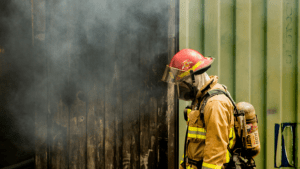
Canada Appeals for International Firefighting Aid
June 09, 2025: Canada has issued an international appeal for firefighting support as wildfires intensify across multiple provinces

May 6, 2021: -U.S. birth and fertility rates decreased to another record low in 2020 as births went down for the sixth consecutive year to the lowest level since 1979, according to new data from the Centers for Disease Control and Prevention’s National Center for Health Statistics.
Last year, the number of births in the U.S. declined by 4% from 2019, double the average annual rate of decline of 2% from 2014, the CDC said in preliminary birth data released on Wednesday.
Total fertility rates and general fertility rates have declined by 4% since 2019, which reached record lows. The nation is “below replacement levels because of the U.S. low birth rates,” the CDC said.
While the agency did not attribute the overall drop in births to the coronavirus pandemic, it looked at birth rates in New York City women delivering their babies outside the five boroughs at the height of the U.S. outbreak.
Last year, women fled the city to give birth from March through November, with out-of-town births among NYC residents who peak in April and May at above 10% for both months.
The overall number of births declined 3% for Hispanic women and 4% for white and Black women from 2019 to 2020.
Birth rates in women aged 20 to 24 and 25 to 29 dipped by 6% and 4%, respectively, to record lows. According to CDC data, birth rates decreased by 4% and 2%, respectively, among women aged 30 to 34 and 35 to 39 but did not reach low records.
According to the CDC, birth rates for 40 years of women fell 44 fell by 2% from 2019, but birth rates for 45 years of women and up remained unchanged.
The data population-based data estimates derived from the 2010 census as of July 1 and counts of all birth records received and processed by the National Center for Health Statistics as of Feb. 11. The papers represent around 100% of registered births happening in 2020.
Some experts say that a decline in birth rates could represent a lack of vital resources like housing and food among those demographics, with correlations between the rise in unemployment rates and the fall in birth rates. Still, the future economic impact of a decline in birth rates is debated.
We provide the insights on leaders who are responsible for taking their organization to new heights, all the while bringing together a group of talented individuals.

June 09, 2025: Canada has issued an international appeal for firefighting support as wildfires intensify across multiple provinces

May 27, 2025: Air Canada Cuts Five U.S. Routes for Winter 2025–26, Part of Broader Cross-Border Retrenchment

May 26, 2025: Trump Freezes $2.2B in Federal Grants to Harvard Over DEI, Threatens Tax-Exempt Status.

May 14, 2025: Microsoft has announced plans to reduce its global workforce by approximately 3%, affecting roughly 10,000 employees across multiple departments.

May 13, 2025: The Trump administration is considering suspending the constitutional right of habeas corpus in a bid to accelerate mass deportations.

April 29, 2025: Donald Trump’s second term has reached the 100-day mark under sustained public skepticism, with national approval ratings